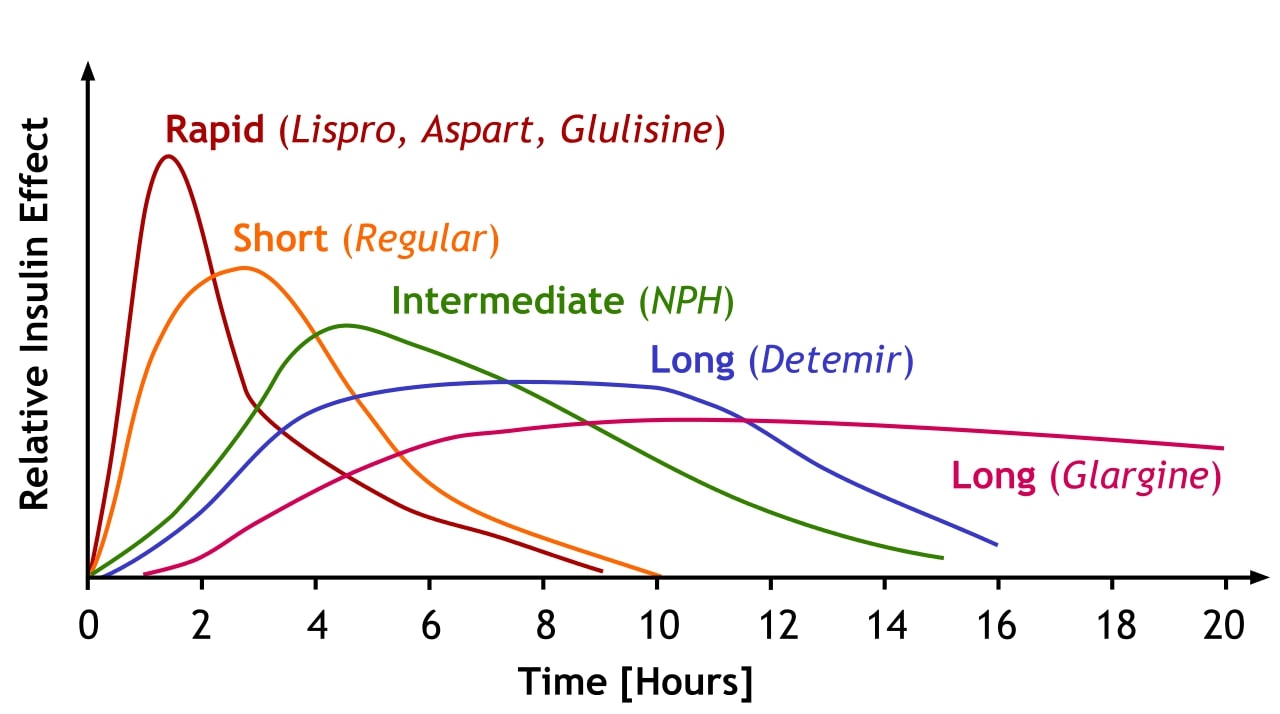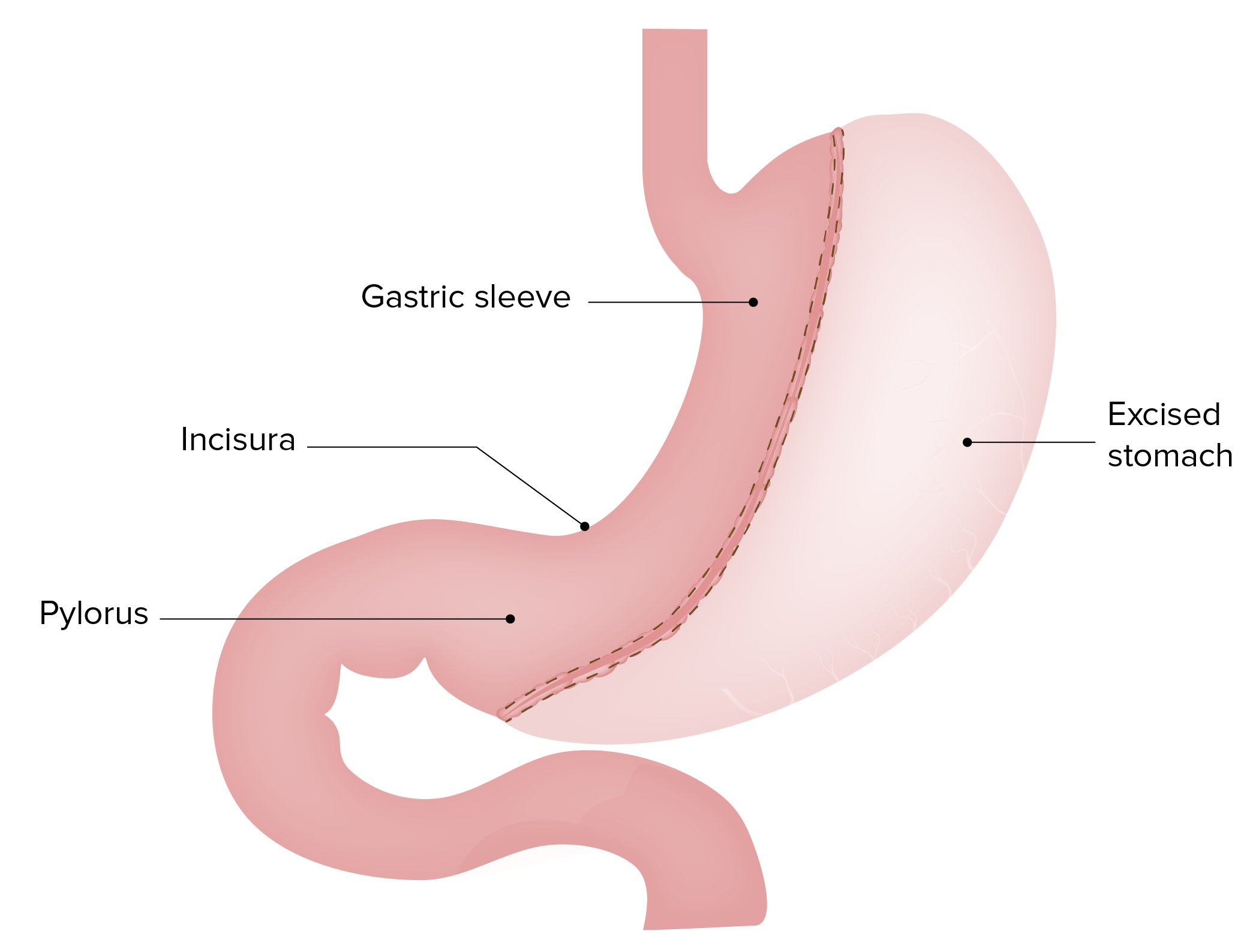Playlist
Show Playlist
Hide Playlist
Bariatric Surgery with Case
-
02-03 Diabetes Mellitus part 1.pdf
-
Reference List Endocrinology.pdf
-
Reference List Diabetes Mellitus.pdf
-
Download Lecture Overview
00:00 Let's go on to a case. A 50-year-old man with type 2 diabetes comes to see you. His daily log demonstrates average blood glucose levels of 120-150 mg/dL with hypoglycemia in the 50 mg/dL range noted once or twice a week but without a discernable pattern. He reports intolerance to exercise due to knee pain. He is able to walk only about 15 minutes daily. Multiple attempts at dietary weight loss have failed. Medications are insulin glargine, insulin aspart, aspirin, and atorvastatin. On physical exam, the blood pressure is 140/80 and the pulse rate is 65 beats/minute. 00:45 His body mass index is 38. There are no carotid bruits or cardiac murmurs. He has bilateral loss of monofilament and vibratory sensation on the feet and decreased ankle reflexes are also noted. The remainder of his examination is normal. Looking at his labs, we find that the hemoglobin A1c level is 8% and serum creatinine is 1.4. What treatment can we offer this patient? Daily blood glucose measurements seem adequate. Random episodes of hypoglycemia though are concerning. A major intervention exercise is not possible for this patient given his size and the presence of knee pain most likely from arthritis. Dieting does not seem to improve his long-term glucose control either. 01:41 He takes insulin both long acting and pre-meal boluses and seems to be taking it regularly without skipping doses. The fact that he is obese, in fact almost morbidly obese, is a significant complication in this particular case. His hemoglobin A1c is high and he is developing signs of diabetic nephropathy as well as diabetic neuropathy. The best possible treatment for this particular patient is bariatric or metabolic surgery. Bariatric or metabolic surgery consists of restrictive and bypass procedures to the upper gastrointestinal tract can be considered in obese patients with type 2 diabetes mellitus. It is recommended to treat type 2 diabetes mellitus in appropriate surgical candidates. Patients with body mass indices above 40 or Asian Americans who have body mass indices above 37.5 regardless of the level of glycemic control or complexity of glucose-lowering regimens are candidates, adults with lower BMIs when hypoglycemia is inadequately controlled despite lifestyle and optimum medical therapy. It's also considered for adults with type 2 diabetes and a BMI in the lower ranges of 30-34.9 and in Asian Americans with even lower BMIs if hypoglycemia is inadequately controlled despite optimal medical treatment with either an oral or injectable medication that could include insulin.
About the Lecture
The lecture Bariatric Surgery with Case by Michael Lazarus, MD is from the course Diabetes Mellitus. It contains the following chapters:
- Case: 50-year-old Man with Type 2 DM
- Bariatric/Metabolic Surgery
Included Quiz Questions
What is the most appropriate way to treat the following patient? A 50-year-old man with type 2 DM has an average blood glucose level of 120–150 mg/dL, with hypoglycemia in the 50-mg/dL range, noted once or twice per week without a discernible pattern. He reports intolerance to exercise due to knee pain and is able to walk only 15 minutes daily. Multiple attempts at dietary weight loss have failed. Medications are insulin glargine, insulin aspart, aspirin, and atorvastatin. Physical examination: Blood pressure is 140/80 mm Hg, pulse is 65 beats/min, and BMI is 38 kg/m2. There are no carotid bruits or cardiac murmurs. Bilateral loss of monofilament, vibratory sensation on the feet, and decreased ankle reflexes are noted. Laboratory test results: HbA1c = 8.0% and serum creatinine = 1.4 mg/dL.
- Perform bariatric surgery
- Increase physical activity
- Increase insulin regimen
- Impose strict dietary modifications
- Start pioglitazone
Which of the following is the strongest contraindication to having bariatric surgery?
- History of coronary artery disease with ongoing chest tightness while walking
- Diabetes mellitus, type 2
- BMI > 40 kg/m2 in a white man
- BMI > 37.5 kg/m2 in an Asian man
- History of bilateral knee replacements
Customer reviews
5,0 of 5 stars
| 5 Stars |
|
5 |
| 4 Stars |
|
0 |
| 3 Stars |
|
0 |
| 2 Stars |
|
0 |
| 1 Star |
|
0 |





